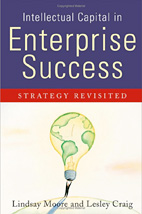Within today’s rapidly changing corporations, individuals at all levels are increasingly called upon to demonstrate their ability to think strategically. However, many are inadequately prepared to perform this task. Many new executives, and even those long within the executive ranks, are unsure how to properly engage in strategic thinking.
New Thinking About the Value of Strategy
During the 1960s and the 1970s, “strategic planning” emerged as the model for corporate planning. However, by the 1980s, the value of strategic planning began to be called into question.
Non-Financial Performance Measurements
We are all well-acquainted with the traditional measures of enterprise performance. But today, under the influence of globalization, environmental crises, and widespread ethical breakdown there is pressure to identify and report new, non-traditional, and “non-financial” measures of performance to get at newly recognized dimensions of enterprise value, success, and significance. These new demands emerge from a belief that social, environmental, ethical, and geopolitical factors materially impact the ability of a company or enterprise to perform favorably.
Why Do We Need a Brand Strategy?
With the dawn, during the mid 1990s, of the Age of Intellectual Capital, came the realization that the real wealth in the modern enterprise is located in the intangible assets of that enterprise and not in the “traditional (tangible) assets” such as real estate, plant, equipment, inventory, cash, and the like.

 As the knowledge-based economy expands, the companies and individuals that possess intangible intellectual assets, such as intellectual property, will need specialized expertise, strategic thinking, legal experience, and the wisdom necessary to manage intellectual assets.
As the knowledge-based economy expands, the companies and individuals that possess intangible intellectual assets, such as intellectual property, will need specialized expertise, strategic thinking, legal experience, and the wisdom necessary to manage intellectual assets.